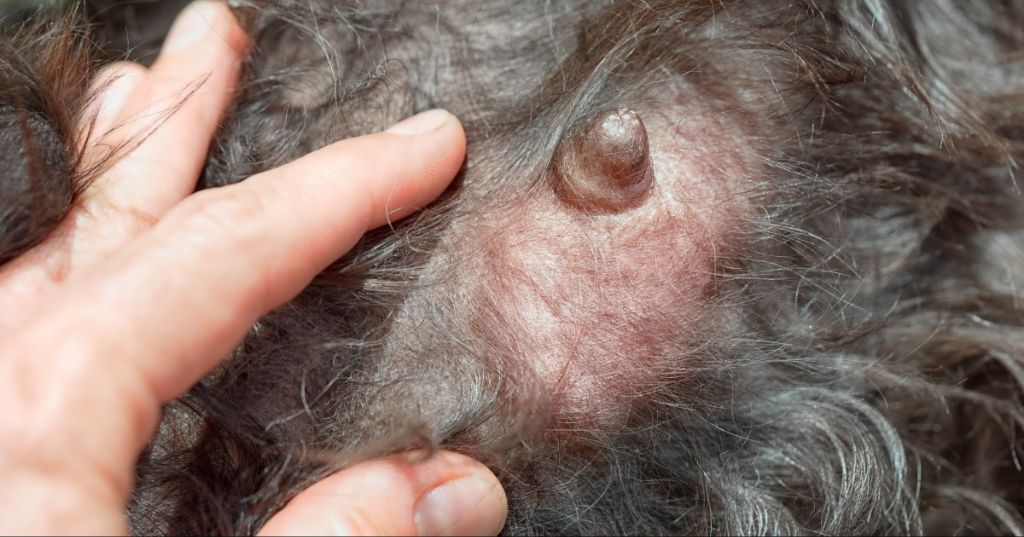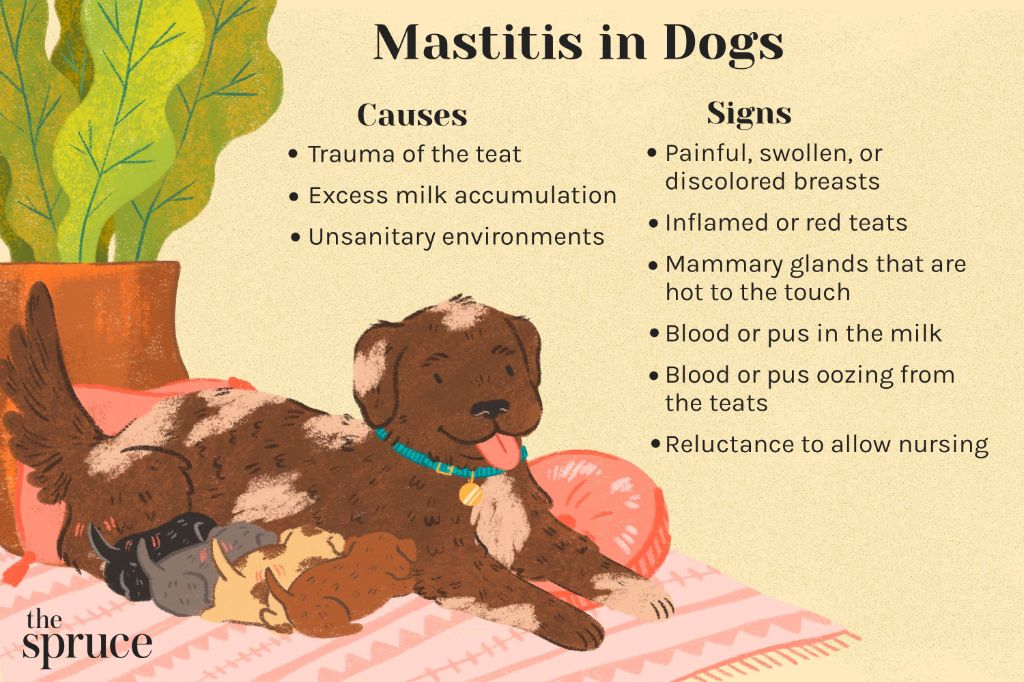Introduction
Female dogs can sometimes produce milk even if they have not been pregnant or given birth recently. This condition, known as false pregnancy or pseudopregnancy, can occur due to hormonal fluctuations in an unspayed female dog’s reproductive cycle. While not a true medical emergency, false pregnancy should be monitored by a veterinarian to ensure the dog’s health and comfort.
This article will provide an overview of the hormonal causes of pseudopregnancy, the typical signs and symptoms, how it differs from a real pregnancy, health concerns to watch for, when to seek veterinary care, and tips for caring for a dog experiencing this condition.
Anatomy of Lactation
Female dogs have a complex mammary gland anatomy that allows them to produce milk for nursing puppies. The mammary glands contain alveoli, which are small sacs that produce and store milk. When a female dog is pregnant, her progesterone and prolactin levels rise, which causes the alveoli to develop and prepare for milk production. After giving birth, the drop in progesterone stimulates the mammary glands to begin producing milk. This process is called lactogenesis. The hormone oxytocin causes the alveoli to contract and release the milk through milk ducts to the nipples, allowing the puppies to nurse. The puppies’ suckling further stimulates oxytocin and prolactin release, which maintains milk production as long as the puppies continue to nurse (1).
(1) https://www.ncbi.nlm.nih.gov/pmc/articles/PMC10266749/
Pseudopregnancy
Pseudopregnancy, also known as false pregnancy, is a condition that occurs in female dogs after an estrus or heat cycle. Even though the dog was not actually pregnant, her body still undergoes physical and hormonal changes that mimic pregnancy. This can occur whether or not the dog was bred during her heat cycle.
During pseudopregnancy, the dog’s mammary glands become enlarged and she may even produce milk. This happens because her progesterone levels remain elevated, which signals the mammary glands to prepare for nursing puppies even though none are present. The dog may also exhibit nesting behaviors like gathering toys or blankets and mothering them. She may gain weight and her abdomen may become swollen, furthering the appearance of pregnancy.
Pseudopregnancy typically occurs 1-2 months after the end of estrus and lasts 2-3 weeks on average. The hormonal changes stimulate the mammary glands to enlarge and produce milk, even without actual puppies to nurse. This allows a female dog to lactate without being pregnant or giving birth.
According to research from VCA Hospitals, 20-50% of dogs who are not spayed will experience pseudopregnancy at some point in their lives. So it is a relatively common phenomenon that can explain lactation in non-pregnant female dogs.
Hormones Involved

The main hormones that control lactation in female dogs are prolactin, oxytocin, estrogen, and progesterone. Prolactin is secreted by the pituitary gland and stimulates the mammary glands to produce milk. Oxytocin causes the milk let-down reflex and milk ejection from the mammary glands. Estrogen primed the mammary glands during pregnancy in preparation for lactation. Progesterone inhibits lactation during pregnancy, but a sharp drop allows lactation to commence after giving birth (1).
During pregnancy, progesterone levels rise steadily, while prolactin levels also rise but are inhibited by progesterone from initiating milk production. Right before birth, progesterone levels drop rapidly, allowing prolactin to stimulate lactation. Oxytocin causes contractions during labor and birth, and is also released afterwards in response to nipple stimulation to cause milk ejection for nursing (2).
These hormones work together in a complex feedback system to control the initiation, maintenance, and cessation of lactation in female dogs after pregnancy and birth. However, lactation can sometimes occur even without pregnancy and birth in a condition called pseudopregnancy or false pregnancy.
False Pregnancy
False pregnancy, also known as pseudopregnancy, is a condition in which unspayed female dogs exhibit the signs and symptoms of pregnancy even though they are not actually pregnant. This occurs when the dog’s hormones mimic those of a normal pregnancy after an estrus or heat cycle (WebMD, 2022).
During a false pregnancy, the dog’s mammary glands swell, she gains weight, loses her appetite, and her abdomen swells. The dog may even produce milk and build a nest for her “puppies.” She may also display mothering behaviors like carrying around toys and becoming more protective and aggressive. These signs can begin 1-2 months after the heat cycle ends and may last 2-3 weeks before fading. According to VCA Hospitals, nearly 50-75% of dogs who go through a heat cycle without becoming pregnant experience false pregnancy (VCA Hospitals, 2022).
False pregnancies resemble pseudopregnancy because they cause similar physical and behavioral changes. The main difference is that pseudopregnancy occurs after mating, while false pregnancy happens when the dog was not bred at all. But both conditions are triggered by the dog’s body preparing for pregnancy in response to hormones, when no actual puppies will be born.
Other Factors
There are a few other factors that can cause lactation without pregnancy in female dogs:
Some medications can trigger lactation, including antipsychotics, antidepressants, hormones, and opioids. The mechanism is not fully understood, but these drugs appear to affect prolactin levels.
Pituitary tumors can also cause elevated prolactin secretion and result in milk production. The tumor causes the pituitary gland to release more prolactin than normal.
Excessive nipple stimulation is another potential cause. Prolactin levels increase in response to nipple stimulation, so persistent stimulation from a pup or rubbing against objects can sometimes induce lactation.
In rare cases, lactation has been linked to extreme stress or weight loss. The exact reason is unknown, but stress hormones and metabolic changes may play a role.
Sources:
https://www.medicalnewstoday.com/articles/322904
https://www.healthline.com/health/pregnancy/lactating-not-pregnant
Lactating Without Pregnancy

It is possible for female dogs to lactate without being pregnant or nursing puppies. This can occur due to a condition called pseudopregnancy or false pregnancy. Pseudopregnancy is estimated to occur in up to 50-75% of intact female dogs and results when progesterone levels remain elevated after estrus or heat cycles, mimicking the hormone changes that occur in true pregnancy (1).
During pseudopregnancy, the female dog’s body behaves as if it is pregnant. Hormonal changes stimulate the mammary glands to begin producing milk, even though the dog is not actually pregnant. Pseudopregnant dogs may exhibit nesting behaviors, lethargy, enlarged mammary glands and even mothering behaviors towards toys or other objects (2). Pseudopregnancy usually resolves on its own within 2-3 weeks, but dogs may experience multiple episodes unless the underlying cause is addressed.
In rare cases, some medical conditions like overactive adrenal glands can also cause lactation in dogs without pregnancy. Certain drugs like some antipsychotics may also instigate lactation as a side effect. Trauma to mammary glands or nipples can sometimes cause lactation as well (3).
If a female dog is displaying mothering behaviors, enlarged mammary glands or producing milk without puppies, a veterinarian should be consulted to check for pseudopregnancy or other medical causes. Treating the underlying condition can help resolve unwanted lactation in dogs.
Health Concerns
One potential health issue to watch out for in non-pregnant lactating dogs is mastitis. Mastitis is an infection of the mammary glands, usually caused by bacteria. It is not uncommon for dogs to develop mastitis when they produce milk without having puppies. The milk accumulates in the teats, which allows bacteria to grow and cause infection. The mammary glands become inflamed, hot, and painful. Discharge from the nipples may be abnormal. Left untreated, mastitis can be a serious condition [1].

Other complications like breast cancer or mammary tumors may also arise due to prolonged unnecessary lactation in dogs. The hormonal changes and mammary gland activity from lactating can increase the risk of abnormal cell growth. So it’s important to resolve or manage pseudopregnancy milk production under veterinary supervision [2].
Additionally, the energy demands from lactation without puppies to feed can cause weight loss, nutritional deficiencies, lethargy, and fatigue in the mother dog. Consulting a vet can help prevent long-term impacts on the dog’s health.
When to See a Vet
Most cases of milk production without pregnancy in dogs are not cause for concern. However, there are some situations where a visit to the vet is warranted.
See your veterinarian if your dog’s breasts remain enlarged, hot, or painful beyond one week of lactation. Prolonged engorgement can increase the risk of mastitis. Your vet can prescribe antibiotics and anti-inflammatory medications to treat infection and relieve discomfort.
You should also consult your vet if the milk flow persists beyond 3-4 weeks or seems excessive. They can check for potential underlying medical issues impacting hormones. Persistent lactation without pregnancy puts a major energy demand on the body.
In addition, seek veterinary advice if your dog shows signs of depression, lethargy, loss of appetite, or other behavioral changes. False pregnancy hormones can impact mood. Your vet can provide support and suggest ways to curb lactation.
Ruling out health problems is especially important for senior dogs lactating without pregnancy, as it could signal conditions like cancer or organ failure. Your vet will thoroughly examine your dog and recommend any needed tests.
While lactation without pregnancy is usually harmless in dogs, veterinary guidance can prevent complications. See your vet promptly about any concerns related to your dog producing milk.

Conclusion
To summarize, female dogs can sometimes produce milk even if they have not been pregnant or given birth to puppies. This phenomenon is called pseudopregnancy and is the result of hormonal changes in the dog’s body that mimic pregnancy. While lactation without pregnancy is not uncommon in dogs, it’s important to monitor your dog’s health and watch for signs of infection or other issues. If prolonged or excessive milk production occurs, consult your veterinarian. But in most cases, this condition will resolve on its own after a few weeks. So in conclusion, yes – female dogs can lactate and produce milk even without a prior pregnancy. The key is keeping an eye on the dog’s health and looking for any concerns that may require medical attention.